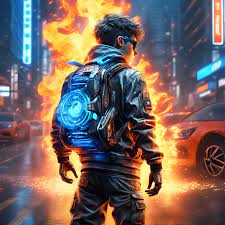The history of cinema is intricately intertwined with the evolution of special effects, a journey that spans from the early days of practical magic to the era of digital wonders. This article embarks on a cinematic odyssey, tracing the trajectory of special effects, exploring the innovative techniques that have shaped storytelling, and celebrating the magic of both practical and digital advancements.
The Early Days of Practical Magic:
- Miniatures and Matte Paintings: In the early days of cinema, filmmakers employed miniatures and matte paintings to create fantastical worlds and grand landscapes. These practical effects, although rudimentary by today’s standards, laid the foundation for the art of visual storytelling.
- Stop-Motion Animation: Stop-motion animation brought inanimate objects to life, enchanting audiences with the illusion of movement. Pioneers like Ray Harryhausen showcased the possibilities of practical magic in films like “Jason and the Argonauts,” setting the stage for the integration of animation into live-action sequences.
The Rise of Practical Effects in Classic Cinema:
- Practical Creature Effects: Classic films like “Jurassic Park” and “Star Wars” relied on practical creature effects, using animatronics and puppetry to bring iconic characters like Yoda and the T-Rex to life. The tangible nature of these effects added a visceral quality to the cinematic experience.
- Makeup and Prosthetics: Makeup and prosthetics became integral to transforming actors into fantastical beings. The artistry of makeup artists and special effects designers garnered recognition in films like “The Lord of the Rings,” where characters like Gollum showcased the seamless integration of practical effects with digital enhancements.
The Digital Revolution:
- The Advent of CGI: The late 20th century witnessed the advent of computer-generated imagery (CGI), revolutionizing the landscape of special effects. Films like “Terminator 2: Judgment Day” showcased the potential of CGI in creating realistic and dynamic visual sequences.
- Digital Animation Brilliance: Pixar Animation Studios ushered in a new era of digital wonders with films like “Toy Story.” The seamless integration of computer-generated characters into the narrative opened up a realm of possibilities for storytelling and visual creativity.
The Symbiosis of Practical and Digital:
- In-Camera Effects: Directors like Christopher Nolan emphasize in-camera effects, combining practical elements with digital enhancements. This approach, seen in films like “Inception,” showcases the synergy between traditional and modern techniques to create mind-bending visuals.
- Motion Capture Technology: Motion capture technology allows actors’ performances to be translated into digital characters. Films like “Avatar” and “The Jungle Book” demonstrate how this technology can bring fantastical creatures to life while retaining the nuances of human expression.
Challenges and Artistic Considerations:
- Overreliance on CGI: While CGI offers boundless possibilities, there is a debate about its overreliance and the potential loss of the tangible magic seen in practical effects. Striking a balance between the two becomes a crucial consideration for filmmakers.
- Preserving Artisanal Craftsmanship: The art of practical effects, from makeup to animatronics, requires artisanal craftsmanship. Preserving these traditional skills amidst the digital revolution is essential for maintaining the magic that practical effects bring to cinema.
Looking Towards the Future:
- Immersive Technologies: Virtual reality (VR) and augmented reality (AR) are poised to redefine the cinematic experience. These immersive technologies hold the potential to transport audiences into interactive and three-dimensional worlds, reshaping the future of storytelling.
- Advancements in Deepfake Technology: Deepfake technology, while posing ethical challenges, offers new possibilities for seamlessly integrating actors into historical or fictional contexts. As this technology evolves, filmmakers will need to navigate the ethical considerations associated with manipulating reality.









